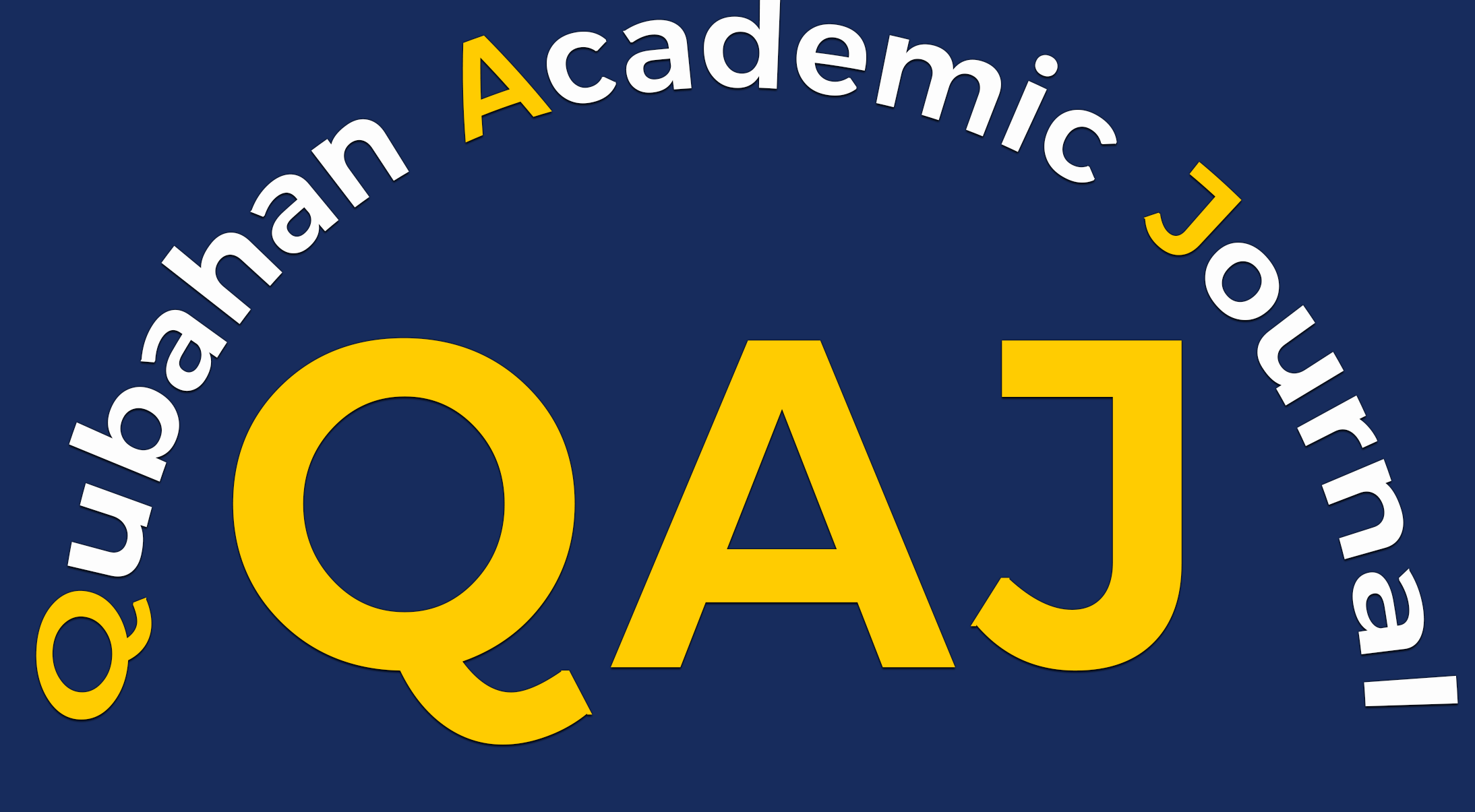Verbal and Nonverbal Languages in Online Thesis Examinations: An Illocutionary Act Study
DOI:
https://doi.org/10.48161/qaj.v4n1a188Abstract
Research problem is how the use of verbal and nonverbal language in illocutionary speech acts, in communicating on online thesis examinations. Study aimed to describe the types of illocutionary acts, the use of verbal and nonverbal language in online thesis examinations. The method used was qualitative, case study. The collecting data used document review while data analysis utilized content analysis. The research findings showed that, 1) Type of constative illocutionary act namely ascriptive, informative, assertive, responsive, retractive, assertive, confirmative, and disputative; The directive illocutionary acts namely requestees, questions, requirements, prohibitive, permissive, and advisories; Commissive illocutionary acts namely promises; and the illocution acts of acknowledgment. 2) Subsequent findings; Verbal language in constative acts was found verbs to inform, assess, confirm, respond, convey, admit, question, observe, justify, presume with theory, speculate, reject or accept, report, object to, and clarify; directive acts was verbs to instruct, command, direct, require, suggest, encourage, warn, propose, advise, plead/ask, affirm, authorize, give opportunity, allow, ask and interrogate, and prohibit; commissive acts was verbs to 'make a promise and agree'; and the act of acknowledgment has the verbs to 'greeting', 'introduce oneself', 'thank', 'apologize', and the verb of 'hope'. Further findings, 3) The nonverbal language found were gestures; illustrator, regulator, emblem, or adaptor: facial expressions found based on linguistic terms are syntactic display, speaker semantic display, and listener semantic adaptor. The research findings have implications for reference and literature in linguistic theory, language skills (speaking and listening), and language learning with linguistic communication approach, both offline and online.
Downloads
References
Díaz, L. E. (2020). Analyzing the impact of COVID-19 on education neuroeducation as a binomial of action). Toward a paradigm shift: neuroeducation as a binomial of action. Sustainability 2020, 12(14), 5646.
Hadiyanto, Mukminin, A., Ali, R. M., Fauzan, M., & Wulandari, S. (2023). The gap between teachers’ English proficiency, necessity and online learning skills in the COVID-19 pandemic . Nurture, 17(3), 166–179.
Yulianti, K., & Mukminin, A. (2021). Teaching and learning during COVID-19 pandemic: A qualitative study on elementary school teachers in Indonesia. The Qualitative Report, 26(12), 3900-3910.
Austin, J., & Urmson, J. (2018). How to do things with words. Oxford University.
Searle, J. R. (2011). Speech acts. Cambridge University.
Green, M. (2017). Illocution and empathy. Philosophia, 45(3), 881-893.
Sbisà, M. (2014). The Austinian conception of illocution and its implications for value judgments and social ontology. Etica & Politica / Ethics & Politics, XVI(2),619-631.
Brown, D. (2000). Principles of language learning and teaching. Longman.
Levinson, S. (1997). Pragmatics. Cambridge University Press.
Verschueren, J. (1999). Understanding pragmatics. London: Edwar Arnold.
Yule, G. (1996). Pragmatics. Oxford University Press.
Bach, K., & Harnish, M. R. (1979). Linguistic communication and speech acts. MIT Press.
Ibrahim, A. (1993). Kajian tindak tutur. Usaha Nasional.
Mulyana, D. (2005). Ilmu komunikasi: Suatu pengantar. Remaja Rosdakarya.
Rakhmat, J. (1994). Psikologi komunikasi. Remaja Rosdakarya.
Salzmann, Z. S. (2012). Language,culture, and society. Westview Press.
Okoro, E., &Washington, M. (2011). Communicating in a multicultural classroom: A study of students nonverbal behavior and attitudes toward faculty attire. Journal of College Teaching & Learning (TLC), 8(7), 27-38.
Hall, A. &. Berardino, L.(2006). Teaching professional behaviors: Differences in the perceptions of faculty,students and empoyers. Journal of Business Ethics, 63, 407-415.
LaFrance, M., & Mayo, C. (1978). Cultural aspects of nonverbal communication. International Journal of Intercultural Relations, 2(1), 71-89.
Burgoon, G. k. (2016). Nonverbal communication. Routledge.
Knapp, M. L. (2013). Nonverbal communication in human interaction. Wadsworth.
Taufina. (2015). Makna komunikasi verbal dan unsur nonverbalnya dalam tuturan konstatif di kelas i sekolah dasar. Sekolah Dasar, 24(2), 99-110.
Kusumawati, T. I. (2016). Komunikasi verbal dan nonverbal. Jurnal Pendidikan dan konseling, 6(2), 83-98.
Belles, L. (2016). Nonverbal Communication in EFL Teaching. Forum de Recerca, 21(1), 483-501. http://dx.doi.org/10.6035/ForumRecerca.2016.21.27
Alawamleh, M., Al-Twait, L. M., & Al-Saht, G. R. (2020). The effect of online learning on communication between instructors and students during covid-19 pandemic. Asian Education and Development Studies, 1, 1-22.https://doi.org/10.1108/AEDS-06-2020-0131
Bell, J., & Waters, S. (2010). Doing your research project: A guide for first-time researchers. Mc Graw Hill.
Ghony, D. (2012). Metode penelitian kualitatif. Ar-Ruzz Media.
Krippendorff, K. H. (2004). Content analysis: An introduction to its methodology. Sage Publications.
Fitriani, S. S., Achmad, D., & Rasmita, F. (2020). An analysis of illocutionary acts in a fantasy movie. Studies in English Language and Education, 7(1),170-180.
Liliweri, A. (2009). Dasar-dasar komunikasi antarbudaya. Pustaka Pelajar.
Hubler, A. (2007). The nonverbal shift in early modern English conversation. John Benjamin B.V.
Rakimahwati, Ismet, S., Zainul, R., Roza, D., & Mukminin, A. (2022). The development of the educational game to improve logical/ mathematical intelligence. Journal of Higher Education Theory and Practice, 22(7), 11-19. doi:10.33423/jhetp.v22i7.5266
Hutagalung, H., Purwana, D., Suhud, U., Mukminin, A., Hamidah, H., & Rahayu, N. (2022). Community self-reliance of rural tourism in indonesia: An interpretative phenomenological analysis. Qualitative Report, 27(7), 1151-1168. doi:10.46743/2160-3715/2022.5215
Collantes, L. M., Torres, J. M., Astrero, E. T., Gaboy, R. G., Castillo, M. E. G. C., & Mukminin, A. (2022). Perspectives, challenges, and opportunities: The pandemic teaching experiences in science courses. Journal of Higher Education Theory and Practice, 22(4), 75-90. doi:10.33423/jhetp.v22i4.5131
Downloads
Published
How to Cite
Issue
Section
License
Copyright (c) 2024 Qubahan Academic Journal

This work is licensed under a Creative Commons Attribution-NonCommercial-NoDerivatives 4.0 International License.











